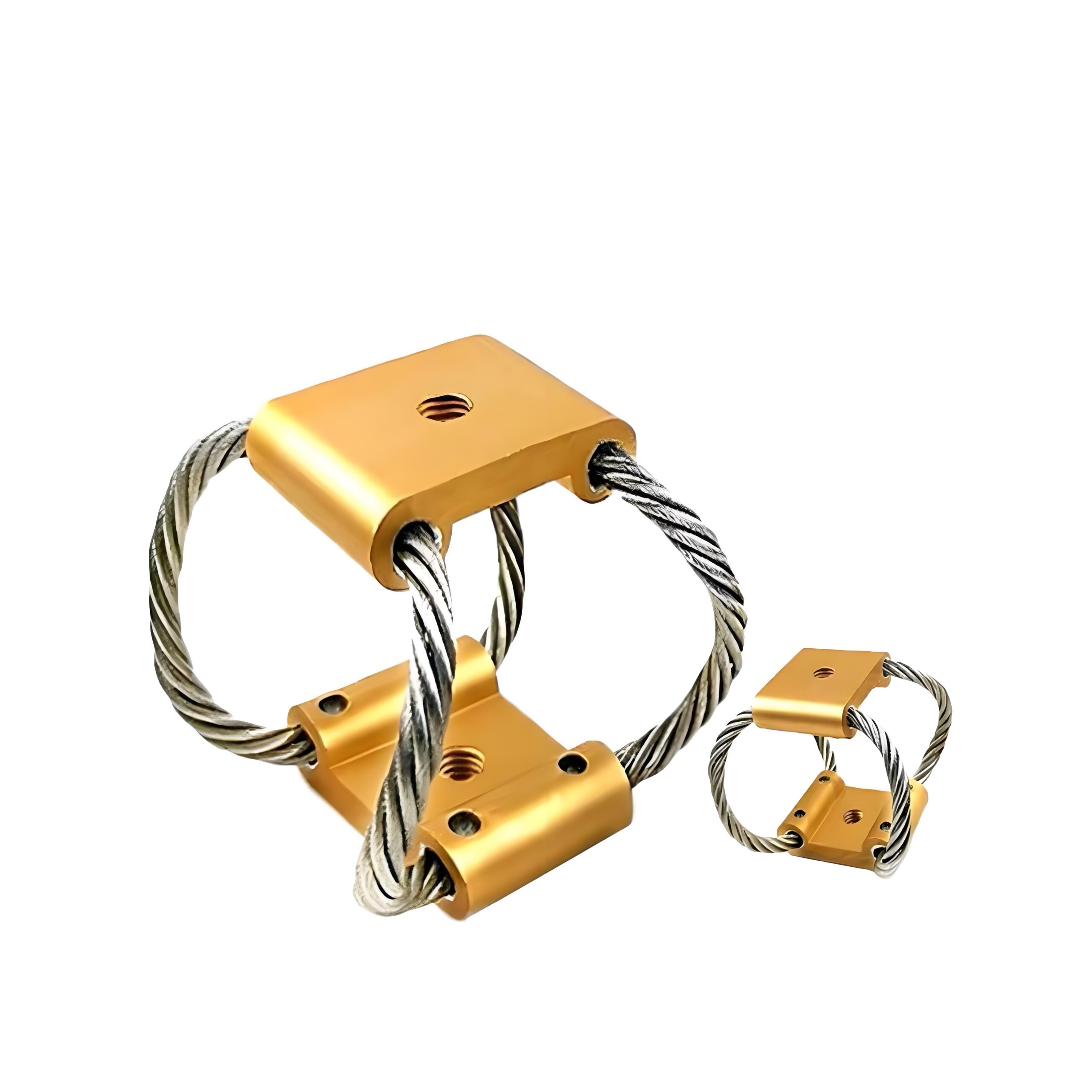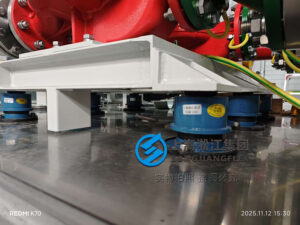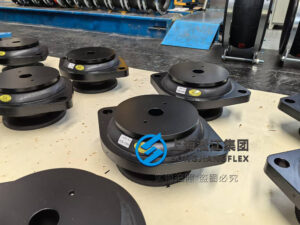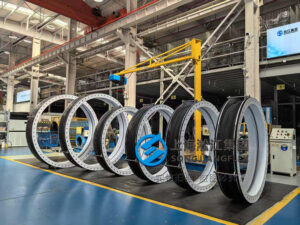Unwanted vibrations can reduce equipment accuracy, shorten lifespan, and cause operational issues. A wire rope vibration isolator is the proven solution to enhance stability and performance.
A wire rope vibration isolator uses stainless steel cable loops within a metal frame to absorb and dampen vibrations in multiple directions, ensuring longer service life and higher stability across industrial, defense, and precision equipment applications.
Let’s explore its definition, function, sizing, selection, and installation tips.
What is a wire rope isolator?
A wire rope isolator is a mechanical device designed to reduce and absorb vibration and shock loads. It works by using stainless steel wire rope loops mounted between two metal bars or frames.
Typically made from corrosion-resistant stainless steel, wire rope isolators—such as helical wire rope isolators and compact wire rope isolators—provide multi-directional vibration protection in harsh environments.
Wire rope isolators operate on the principle of flexural motion and energy dissipation through the cable strands. The loops deform elastically when exposed to vibrations, absorbing kinetic energy before it reaches the protected equipment. Designs vary from helical wire rope isolators with enhanced flexibility to compact wire rope isolators for space-limited applications. Both types offer excellent corrosion resistance and durability, making them suitable for industrial, marine, and aerospace uses.
What does a vibration isolator do?
A vibration isolator separates the equipment from its mounting surface to prevent the transfer of unwanted vibrations and shocks.
It absorbs energy from mechanical motion or environmental disturbances, maintaining equipment stability and protecting sensitive components.
In applications like military vehicles, aircraft, or heavy machinery, a wire rope isolator anti-vibration mount ensures the equipment can function correctly without damage from repetitive vibration. By converting kinetic energy into harmless heat within the cable strands, the isolator significantly reduces wear and tear. This not only improves equipment performance but also minimizes maintenance costs.
How to choose a wire rope isolator?
Selecting the right wire rope isolator involves balancing load requirements, environmental conditions, and installation constraints.
Refer to a wire rope isolator design guide to determine load capacity, deflection range, mounting orientation, and environmental compatibility.
The selection process should start by defining the weight of the equipment and the range of vibration frequencies to be isolated. Materials must be corrosion-resistant for outdoor or marine environments. The wire rope isolator design guide often includes factors such as cable diameter, loop configuration, and number of loops, all of which impact performance. Properly matching these parameters to your application ensures optimal vibration control and service life.
How do you size a vibration isolator?
Sizing a vibration isolator correctly is crucial for achieving the desired vibration reduction and load support.
Use wire rope isolator calculations to match isolator stiffness and damping properties to the load and vibration frequency.
The basic calculation involves determining the static deflection and natural frequency required. By applying wire rope isolator calculations, engineers can estimate the right stiffness level to maximize vibration isolation without compromising structural stability. Factors such as load distribution, mounting angle, and environmental temperature also affect sizing decisions.
What size isolator do I need?
Determining the exact isolator size requires combining load data, equipment dimensions, and operational environment details.
Always factor in load per isolator, safety margins, and the required deflection rate.
For international shipments, the wire rope isolator hs code is essential for customs classification and compliance. In practice, sizing often involves reviewing manufacturer charts and correlating them to your equipment’s load and vibration characteristics. For example, a 40 kg aerial camera mount may require four small isolators, while a 200 kg industrial pump may use larger multi-loop designs.
How to install a vibration isolation pad?
Installation quality directly affects the performance of any vibration isolation system.
Follow manufacturer instructions for alignment, torque specifications, and mounting orientation to avoid performance loss.
Brands like enidine wire rope isolators and socitec wire rope isolators offer detailed installation guidelines. These typically include securing the isolator without excessive preloading, maintaining proper cable loop orientation, and avoiding misalignment. Regular inspections help ensure long-term performance. Poor installation can negate isolation benefits, so precision in alignment and torque application is critical.
Summary
Wire rope vibration isolators deliver lasting stability, vibration control, and durability for diverse industrial, defense, and precision applications.





